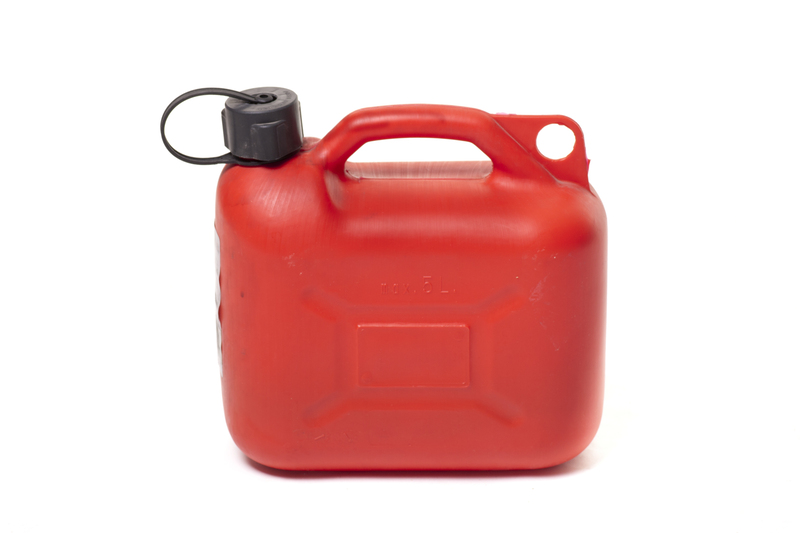Preserve Your Freezer: Essential Storage Techniques
Posted on 21/05/2025
Preserve Your Freezer: Essential Storage Techniques
Keeping your freezer well-organized and items properly stored isn't just about making space -- it's about safeguarding the quality and longevity of your food. Preserving your freezer with the right storage techniques can prevent waste, save money, and ensure you enjoy fresh-tasting meals year-round. In this guide, we will explore essential storage techniques to help you maintain your freezer at peak performance and maximize food preservation.

Why Proper Freezer Storage Matters
The freezer is an indispensable part of every kitchen, allowing us to store food long-term, keep leftovers fresh, and make meal prep easier. However, without effective freezer preservation, your food can suffer from freezer burn, loss of flavor, and even spoilage. Implementing essential freezer storage techniques ensures nutrients are retained and your food remains appetizing.
Main Benefits of Proper Freezer Storage
- Reduces food waste: Freezing slows down bacterial and microbial growth, extending the shelf life of perishable goods.
- Saves money: Preserve bulk purchases and leftovers for future use without sacrificing taste or nutritional value.
- Enhances convenience: Quickly access premade meals, fruits, and vegetables year-round.
- Maintains quality: Well-preserved food retains original texture, flavor, and nutrients.
Freezer Organization: The First Step in Preservation
An overcrowded or disorganized freezer makes it difficult to keep track of stored items and encourages freezer burn. Preserve your freezer by regularly decluttering and arranging foods so nothing is forgotten or wasted.
Top Freezer Organization Tips
- Label & Date Everything: Use waterproof labels or permanent markers to jot down the name and date you're freezing the item. First in, first out!
- Sort By Category: Group meats, veggies, fruits, baked goods, and prepared meals for easy access.
- Use Bins or Baskets: Containment prevents smaller items from disappearing or getting crushed.
- Keep an Inventory: Maintain a list of what's inside and when it was frozen.
Optimal Freezer Temperature For Quality Preservation
Setting your freezer to the right temperature is critical for preserving food. Aim for 0?F (-18?C) or lower to keep items safe and prevent bacterial growth. Investing in a freezer thermometer can help ensure your appliance stays at the proper temperature.
- Tip: Avoid frequent opening and closing, which can cause temperature fluctuations and degrade food quality.
- Tip: Don't overload - allow proper air circulation for even cooling.
Essential Freezer Storage Techniques
- 1. Choose Freezer-Safe Packaging
The packaging you select directly impacts food quality and longevity. Invest in freezer-safe bags or containers designed specifically for subzero temperatures. These prevent freezer burn and maintain flavor and texture.
- Heavy-duty freezer bags: Thick plastic resists punctures and seals out air.
- Vacuum sealers: The gold standard for removing air and protecting against freezer burn.
- Rigid plastic containers: Useful for soups and stews, prevent crushing and spillage.
- Aluminum foil or freezer paper: Adds an extra layer of protection for large cuts of meat or baked goods.
- 2. Remove Air & Seal Tightly
Air exposure is the number one cause of freezer burn, which dries out food and imparts unpleasant flavors. Eliminate as much air as possible from packaging before sealing.
- Press out air by hand before sealing bags.
- Use a straw to suck out air in zipper bags (if you don't have a vacuum sealer).
- Double-bag items for extra protection, especially breads or cakes.
- 3. Portion and Lay Foods Flat
Divide large quantities into meal-sized portions before freezing. Not only does this streamline meal prep, but laying bags or containers flat preserves space and ensures food freezes quickly and evenly.
- Flash-freeze berries or vegetables in a single layer before bagging to prevent clumping.
- Pre-cut meats or cheeses for convenience and faster thawing.
- Freeze sauces and stocks in ice cube trays; when solid, transfer to bags for easy portioning.
- 4. Cool Items Before Freezing
Placing hot food directly in the freezer can thaw nearby items and raise the overall temperature, increasing spoilage risk. Allow hot foods to cool to room temperature before packaging and freezing.
- Divide hot items into small containers to help cool them faster.
- Leave lids slightly ajar during cooling, then seal tightly before freezing.
- 5. First In, First Out (FIFO)
Make it a habit to rotate your freezer stock. Always place newer additions to the back and move older items forward, ensuring nothing expires or gets overlooked.
- Use clear bins for easy visibility.
- Date everything for instant recognition of storage time.
How to Store Specific Foods for Maximum Preservation
Meat & Poultry
- Wrap tightly in plastic film, then cover with aluminum foil or place in a freezer bag. Vacuum sealers are ideal for long-term storage of meats.
- Freeze in meal-size portions to prevent thawing more than you need.
- Label with date and cut type for quick identification.
Fruits & Vegetables
- Blanch most vegetables briefly before freezing to halt enzyme activity and preserve color/flavor.
- Dry thoroughly to prevent ice crystals.
- Freeze fruit slices or berries on baking sheets, then store in airtight containers or bags.
Bread & Baked Goods
- Wrap loaves and rolls in plastic wrap, then freeze in a heavy-duty freezer bag.
- Slice bread before freezing for easy removal of individual portions.
- For cookies or pastries, flash-freeze on a tray before storing together.
Prepared Meals and Leftovers
- Cool completely before packing.
- Use shallow, airtight containers for faster freezing and easier stacking.
- Label containers with dish name and freeze date.
Dairy & Cheese
- Grate cheese before freezing to prevent crumbling.
- Avoid freezing soft cheeses (like brie or cream cheese), which can become grainy.
- Milk and cream can be frozen, but may separate; shake well after thawing.
Preventing Freezer Burn: Tips for Long-term Preservation
Freezer burn doesn't mean your food is unsafe, but it does impact taste and texture. Protect your frozen foods with these expert tips:
- Always use airtight packaging - avoid weak bags or thin wrap.
- Fill containers sufficiently to reduce air space, but allow headroom for expansion in liquids.
- Repackage store-bought items that come in weak packaging (like ice cream cartons or frozen vegetables) into sturdier, sealed containers.
- Freeze in small batches to maintain a steady temperature and limit exposure.
Freezer Maintenance for Long-term Food Preservation
In addition to smart freezer storage techniques, keeping your appliance clean and running efficiently is crucial.
- Defrost regularly to avoid ice buildup that can lower efficiency and decrease storage space.
- Wipe down interior surfaces with a solution of baking soda and warm water to prevent odors and bacterial growth.
- Check door seals to ensure an airtight closure for optimal cooling.
- Don't overload; leave some space for cold airflow between items.
Defrosting Foods Safely: Best Practices
How you thaw frozen foods is just as important as how you store them. Unsafe defrosting can lead to bacteria growth and foodborne illness.
Safe Defrosting Methods
- In the refrigerator: Slow and safe, plan ahead as this can take several hours or overnight.
- In cold water: Seal the item in a watertight bag; submerge and change water every 30 minutes.
- In the microwave: Use only if cooking immediately after thawing, as this can begin to partially cook the food.
Never thaw foods at room temperature on the counter, as this can create unsafe conditions and risk spoilage.

Frequently Asked Questions About Freezer Storage
How long can food be kept in the freezer?
- Meats and poultry: 9 months to 1 year for best quality.
- Vegetables and fruits: 8 to 12 months.
- Bread and baked goods: 3 to 6 months.
- Prepared meals: 2 to 3 months for optimal freshness.
What foods do not freeze well?
- Leafy greens (without blanching) - become limp and soggy.
- High-water vegetables like cucumbers, lettuce, and radishes - lose texture.
- Eggs in the shell - may crack and leak.
- Cream-based sauces - often separate and become grainy.
Can you refreeze thawed food?
- If food has been thawed safely in the refrigerator and hasn't been sitting out, it can generally be refrozen. Quality may suffer slightly, but it's still safe.
Conclusion: Preserve Your Freezer For Freshness and Value
Mastering essential freezer storage techniques isn't just about maximizing space; it's about safeguarding your food, reducing waste, and enjoying fresher meals. By embracing strategic organization, proper packaging, temperature control, and safe thawing, you'll keep your freezer preservation at its best. Make these tips a routine part of your kitchen habits and enjoy fresh, flavorful, and safe food - right from the freezer!
Have more tips to preserve your freezer? Share your freezer storage secrets in the comments and help others maximize their frozen food quality and value!
```






